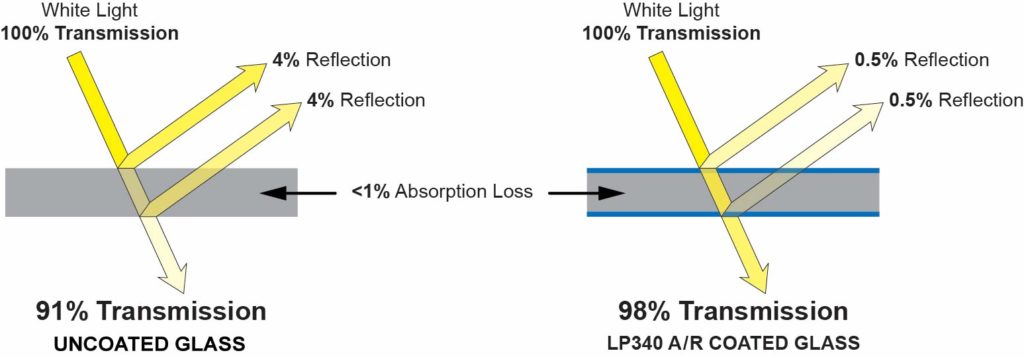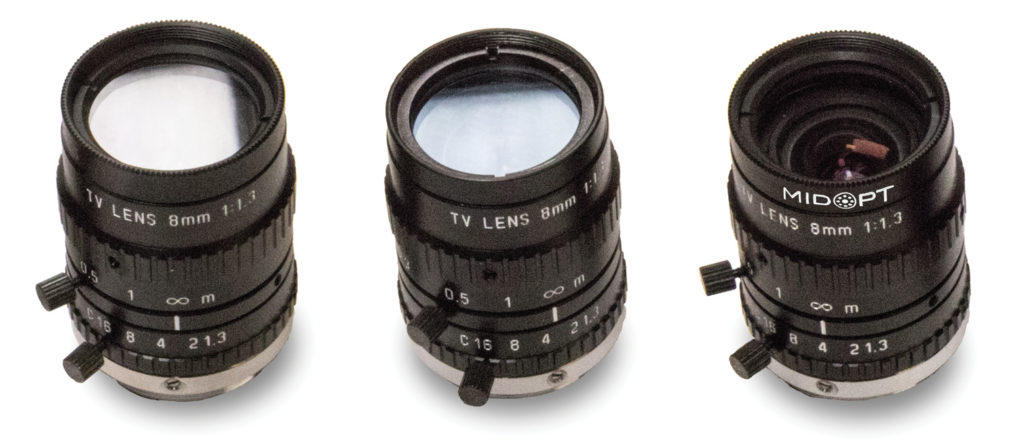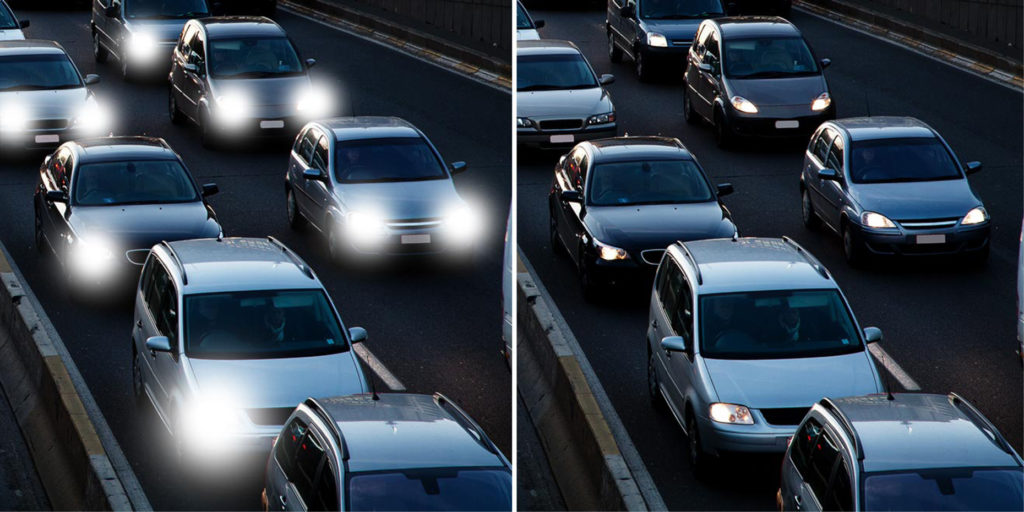High-Transmission Anti-Reflection Coating
When a ray of light passes through a glass surface, a portion of the light is reflected, resulting in a 4% transmission loss per surface for a total of 8% loss. MidOpt uses anti-reflection coating on all filter designs, reducing surface reflection to less than 1%. This improves the efficiency of the vision system by increasing transmission, enhancing contrast and eliminating ghost images. MidOpt offers coatings optimized for the wavelength you are trying to transmit, including ultraviolet, visible and near-infrared. It’s important to understand the full spectral range of your system, as using an incorrect coating can compromise the performance of your system.

SUBSTRATE THICKNESS
Although an anti-reflection coating can allow 99% of light to transmit, the substrate you’re emitting light through is important. For example, if a filter glass only allows 88% of the transmission, an anti-reflective coating will allow 98% of that transmission back—at best. The transmission is indicative of the substrate it’s passing through, meaning the thicker the substrate, the less light that will pass through.

Anti-reflection coatings are used to reduce reflection loss and increase transmission. As seen above, there are many different quality levels of anti-reflection coatings. The high-quality MidOpt multi-layer broadband anti-reflection coating (right) has 99% transmissivity, resulting in a <1% reflection loss. The magnesium fluoride (MgF2) coating (center) has 94% transmissivity, resulting in a <6% reflection loss. The filter with no coating (left) has 90% transmissivity, resulting in a 10% reflection loss.
GLARE AT DUSK FROM AUTOMOTIVE HEADLIGHTS
Anti-reflection coated lenses can significantly improve night vision. The contrast of bright lights from oncoming cars against the darkness of night increases the incidence of noticeable reflections, which can greatly affect visual acuity.

One of the most frequent complaints when imaging oncoming traffic is the “halo” or “starburst” affect from lights at night. Anti-reflection coatings significantly reduce these effects, particularly when optimized for white (visible) light, producing a remarkable improvement in glare reduction.
